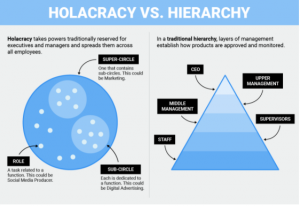As we open the door on 2024, many of my colleagues and I will be focusing on how to best utilize the newer generative AI capabilities in our Human Resources functions. Generative artificial intelligence (AI)—data-trained technology that uses prompts to create content—has seen a massive uptick in adoption over the past year. The technology has advanced significantly within a short timeframe and, relatively speaking, it’s just getting started.
OpenAI’s research estimates that 80 percent of today’s workers could see their jobs impacted by generative AI. The natural concern, from the workforce is that impacted will mean, taken over by, but, in most cases, that is far from the truth. Companies should determine how to use generative AI with intention, in a productive, safe, and human-first way. Some of the most compelling ideas are below:
- Resume Screening and Candidate Matching:
- Use generative AI to analyze resumes and match candidates to job descriptions based on skills, experience, and keywords.
- Improve the efficiency of the initial screening process by automating the identification of suitable candidates.
- Automated Interview Scheduling:
- Implement chatbots powered by generative AI to facilitate interview scheduling.
- Allow candidates to interact with chatbots to find suitable interview slots, answer frequently asked questions, and receive information about the recruitment process.
- Employee Onboarding and Training:
- Develop AI-driven chatbots or virtual assistants to guide new employees through the onboarding process.
- Provide automated training modules and resources tailored to individual employee needs.
- Employee Assistance and Support:
- Use AI-powered chatbots to answer employee queries regarding HR policies, benefits, and general information.
- Enhance employee experience by providing quick and accurate responses to common HR-related inquiries.
- Performance Management and Feedback:
- Implement AI tools to assist in performance evaluations by analyzing employee performance data.
- Provide real-time feedback suggestions for managers based on language models, helping to improve the quality and consistency of feedback.
- Employee Engagement Surveys and Sentiment Analysis:
- Leverage AI to analyze employee feedback from surveys and other sources.
- Identify trends, sentiments, and areas of concern to proactively address employee engagement and satisfaction issues.
- Skills Assessment and Development:
- Use generative AI to assess employee skills and identify areas for development.
- Provide personalized learning recommendations and training programs based on individual employee strengths and weaknesses.
- Policy Compliance and Legal Support:
- Implement AI tools to ensure HR policies and procedures align with legal requirements.
- Provide legal support by analyzing contracts, identifying potential risks, and offering suggestions for compliance.
- Predictive Analytics for Employee Retention:
- Utilize generative AI to analyze historical data and predict employee turnover.
- Identify factors contributing to attrition and develop strategies for employee retention.
- Internal Communication Enhancement:
- Develop AI-driven tools to enhance internal communication within the organization.
- Generate automated newsletters, announcements, or other communication materials to keep employees informed and engaged.
It’s essential to approach the integration of generative AI in HR with careful consideration of ethical and privacy considerations. Additionally, ongoing monitoring and human oversight are crucial to ensure the responsible and fair use of AI technologies in the workplace. Done correctly, that is much to be gained!







